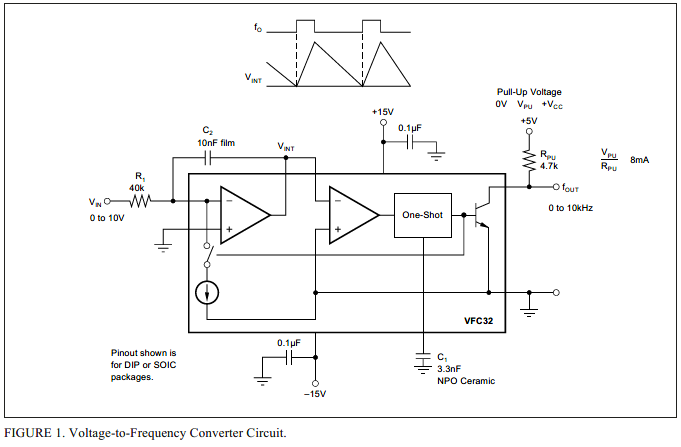Other Parts Discussed in Thread: LM331
My requirement:
- Application: Voltage to Frequency converter
- Input voltage: 0 to 3.3V (varied using potentiometer tuning)
- Output frequency: 60Hz to 120Hz
-------------
I have gone through TI's Voltage to Frequency converter voltage to frequency converter devices. I see that only one IC, VFC32 is SMD and all others are having DIP packages.
Question-1:
- I just want to know when VFC32 is manufactured? Is this during 1990s or earlier? Is this recommended for new designs?
Question-2:
- Can I operate VFC32KU/2K5 with Vcc=12.5V and –VCC = 0V?
- What is recommended R1, C1 & C2 values for my application
- fOUT can be connected with 3.3V pull-up resistor?



